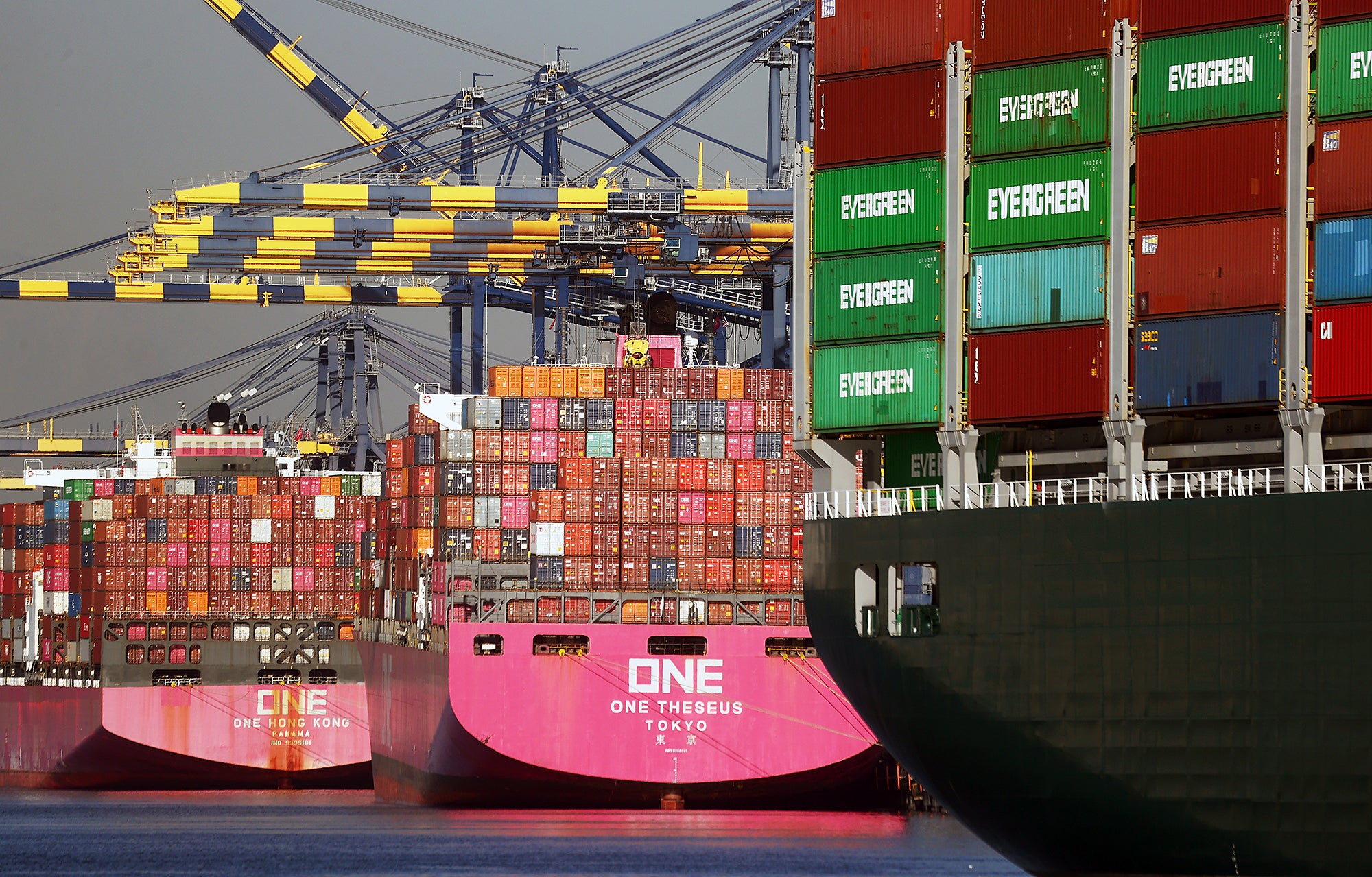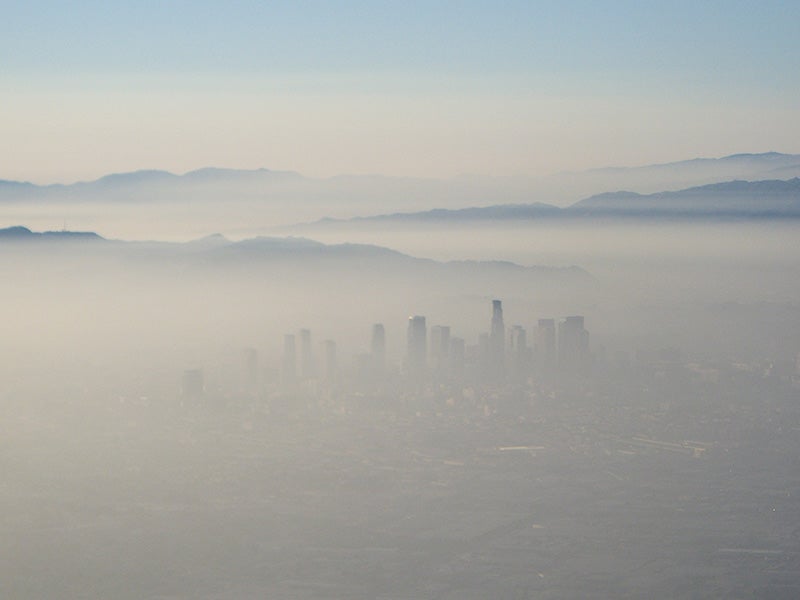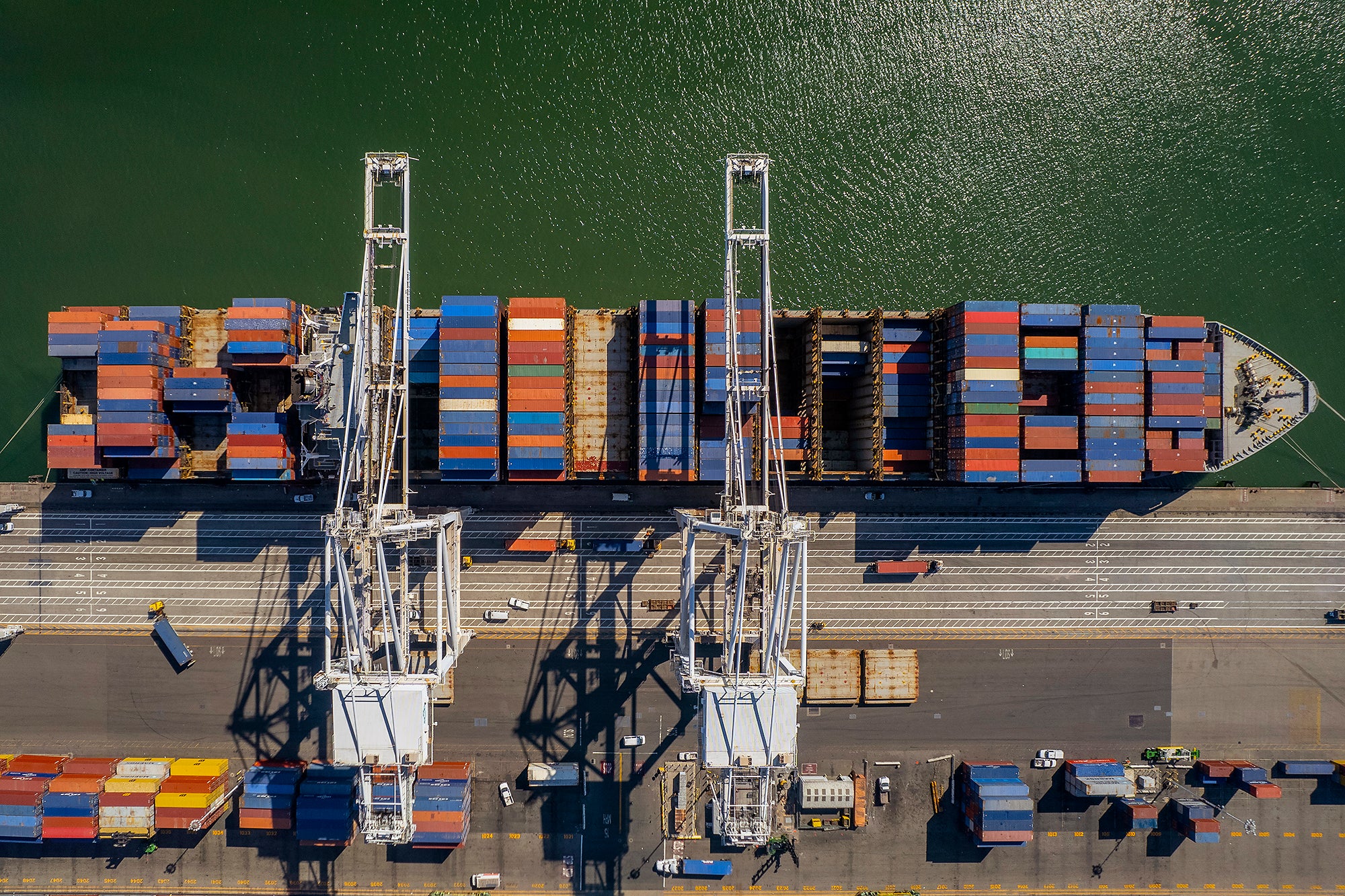EPA Can Grant Relief to Californians Living in the Shadow of Massive Ports. What’s the Hold Up?
With one decision, EPA Administrator Regan can unravel a backdoor deal that leaves millions of Californians choking on air pollution
Los Angeles is known for many things – the city is home to the nation’s pop culture hub, gorgeous Pacific beaches, the Lakers, sandals in January. But what about ports? Staggeringly, nearly half of all U.S. imports come through California’s ports, with the Ports of LA and Long Beach long starring as the busiest ports in the nation. The ports are situated advantageously on the Pacific for goods coming into the continent from Asian countries. They also happen to deliver a toxic dose of air pollution to the most polluted air basin in the nation. That’s right: the Ports of LA and Long Beach are the largest fixed source of air pollution in the most populated region in the U.S.
Recently, our state’s air regulators rolled up their sleeves to fix this problem. The California Air Resources Board made important strides with stronger regulations in 2020 to fix at-berth pollution – the pollution ships emit when docking at California’s ports. The fix was simple: have large ships plug into shore power, rather than run their engines on toxic bunker fuel, one of the dirtiest fuels out there.
Bunker fuel is made from the dredges of the petroleum refining process, which makes it dirt cheap but comes at a high price for our lungs. Plugging into shore power would prevent ships from needing to burn some of the filthiest fuels in the world close to where Angelenos live, work, go to school, and well, breathe.

Shipping containers are stacked on container ships at the Port of Los Angeles in San Pedro, California. (Mario Tama / Getty Images)
This more protective regulation only became more urgent in light of a flurry of traffic at the Ports of LA and Long Beach in the pandemic, which saw vast upticks in container ship traffic as they anchored just outside of LA, waiting to unload their goods. In 2021, cancer-causing diesel pollution spiked by over 50 percent at the Port of Los Angeles. That same year, the Port of Long Beach saw a 35 percent increase in nitrogen oxide emissions. This staggering spike in harmful air pollution was caused, in large part, by emissions from the record-breaking number of ships waiting to dock at the ports.
Ships are already the largest source of pollution at our ports, but will soon be the number one source of nitrogen oxide pollution in the entire Los Angeles region. That’s bad because to put it simply, nitrogen oxide is the key ingredient in LA’s notorious smog problem, as well as our childhood asthma problem.

Smog covers the city of Los Angeles. Three million people in the greater Los Angeles area are living with asthma, heart disease, and other smog-related diseases. (Jordan / CC BY-NC-ND 2.0)
Nearly one year ago, California requested that EPA grant a key authorization for this new protective standard, known as the 2020 At-Berth Rule. But EPA dragged its heels, seeming to feel no urgency to sign off on this life-saving regulation. And while EPA dawdled, the shipping industry was busy working behind the scenes to unravel the new standards.
Industry voices waved the threat of a lawsuit, and the California Air Resources Board eventually caved and offered a backdoor deal to keep the outdated 2007 rules in place longer. Large shipping corporations won, and everyday Angelenos lost, as we agreed to keep burning a filthy fuel.
The shipping industry was given free pass to belch its filthy exhaust into communities all along California’s coasts, from the Bay Area to San Diego, until EPA gives it approval for the new regulation. And the only way out of the smog is with action from the EPA.
The resulting backroom dealing means that EPA Administrator Michael Regan could now, with the stroke of a pen, cut 3,000 pounds of deadly air pollution every day from the most populated region in the country.

Michael S. Regan (NC DEQ)
Officials from EPA are visiting Southern California this week to meet with communities and better understand the pollution burdens in a region where albuterol inhalers, classroom air purifiers, and a noxious blanket of amber smog are the norm. We can think of no better time for Administrator Regan to pick up that pen and help Californians clean up port pollution.
The California Regional Office fights for the rights of all to a healthy environment regardless of where in the state they live; we fight to protect the magnificent natural spaces and wildlife found in California; and we fight to transition California to a zero-emissions future where cars, trucks, buildings, and power plants run on clean energy, not fossil fuels.
